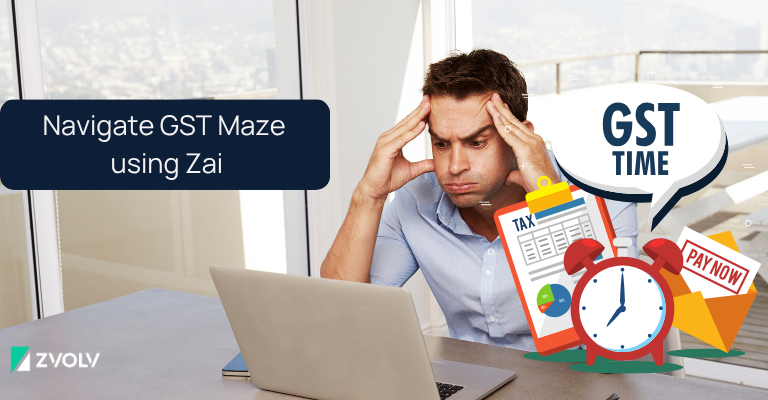The introduction of the Goods and Services Tax (GST) in India marked a paradigm shift in the country’s indirect tax structure, aiming for a unified and streamlined system. However, for finance professionals, the journey of ensuring compliant invoice processing has been fraught with a multitude of challenges, turning a core business function into a complex and high-stakes compliance activity. From grappling with the intricacies of the GST framework to managing technological hurdles and ensuring vendor accountability, finance teams are at the forefront of this ongoing battle for accuracy and efficiency.
At the heart of the challenge lies the stringent and multifaceted nature of GST compliance itself.
A GST-compliant invoice is no longer a simple record of a transaction but a data-rich document with mandatory fields that directly impact a company’s financial health. These include the correct HSN/SAC codes, GSTIN of both supplier and recipient, place of supply, and the accurate bifurcation of GST into CGST, SGST/UTGST, and IGST. Any error or omission can have a cascading effect, leading to a host of problems for finance professionals.

The Input Tax Credit Conundrum: A Major Pain Point
One of the most significant challenges revolves around the claiming of Input Tax Credit (ITC). The seamless flow of ITC is a cornerstone of the GST regime, but its reconciliation is a major source of stress for finance departments. The “2A/2B reconciliation,” which involves matching the ITC claimed in the GSTR-3B return with the details of outward supplies filed by vendors in their GSTR-1 (which reflects in the recipient’s GSTR-2A and GSTR-2B), is a meticulous and often frustrating process.
Finance professionals constantly wrestle with discrepancies arising from:
- Vendor Non-Compliance: Delayed or incorrect filing of GSTR-1 by vendors directly impacts the recipient’s ability to claim ITC. This places the onus on the finance team to continuously follow up with vendors, a task that is both time-consuming and detrimental to business relationships.
- Data Mismatches: Even minor differences in invoice numbers, dates, or taxable values between the company’s records and the vendor’s filings can lead to mismatches, flagging the transaction and potentially leading to the denial of ITC.
- Lack of Real-time Data: The data in GSTR-2A/2B is not always updated in real-time, leading to a lag in reconciliation and creating uncertainty for finance teams when filing their returns.
The E-Invoicing and E-Way Bill Ecosystem: A Double-Edged Sword

The phased implementation of e-invoicing was intended to bring about greater transparency and reduce tax evasion. Under this system, businesses above a certain turnover threshold must generate a unique Invoice Reference Number (IRN) from the government’s Invoice Registration Portal (IRP) for every B2B invoice. While this has the potential to automate data entry for GST returns, its implementation has presented its own set of hurdles.
Finance professionals often face these challenges :
- Technological Integration Issues: Integrating existing ERP systems with the IRP can be complex and requires significant IT support. Any glitch or downtime on the IRP can bring invoicing to a standstill.
- Data Accuracy and Validation: The IRP has strict data validation rules. Incorrect data entry can lead to the rejection of invoices, causing delays in the entire supply chain.
- Scope and Applicability Confusion: The phased rollout and varying applicability based on turnover can create confusion, requiring constant vigilance to ensure compliance.
Similarly, the e-way bill system, mandatory for the movement of goods exceeding a certain value, adds another layer of complexity. The need to generate and manage e-way bills for every eligible consignment, ensuring the details match the invoice, puts additional pressure on finance and logistics teams.
Operational and Procedural Hurdles
Beyond the specific GST-related complexities, finance professionals also contend with a range of operational challenges in the invoice processing workflow:
- Manual Data Entry and Errors: Despite the push for digitalization, many organizations still rely on manual data entry, which is prone to human error. A single incorrect digit can lead to compliance issues and payment delays.
- Lack of Standardization: Invoices are received in various formats – paper, PDF, email – making it difficult to automate the process and leading to inefficiencies.
- Delayed Approval Workflows: Invoices often get stuck in lengthy and manual approval chains, leading to delayed payments, strained vendor relationships, and missed opportunities for early payment discounts.
- Vendor Onboarding and Management: Ensuring that all vendors are GST-compliant from the outset is a significant challenge. This includes verifying their GSTIN and educating them on the company’s invoicing requirements.
The Path Forward: Technology as an Enabler
In response to these multifaceted challenges, a growing number of organizations are turning to technology.
Automationis emerging as a key strategy to streamline invoice processing and enhance compliance.
Solutions ranging from Optical Character Recognition (OCR) for data extraction to sophisticated accounts payable automation platforms are being deployed to:
- Automate the 2A/2B reconciliation process, flagging mismatches for immediate attention.
- Integrate seamlessly with the e-invoicing and e-way bill portals.
- Automate invoice data entry and validation, reducing the risk of errors.
- Provide real-time visibility into the status of invoices and payments.
In conclusion, while the Indian GST framework aims for a more transparent and efficient tax system, the path to compliant invoice processing is a challenging one for finance professionals. The intricate web of rules, the heavy reliance on vendor compliance, and the technological demands of the new ecosystem require a proactive and technology-driven approach. As the GST regime continues to evolve, the ability to navigate these complexities will be a critical determinant of a company’s financial stability and operational success.
